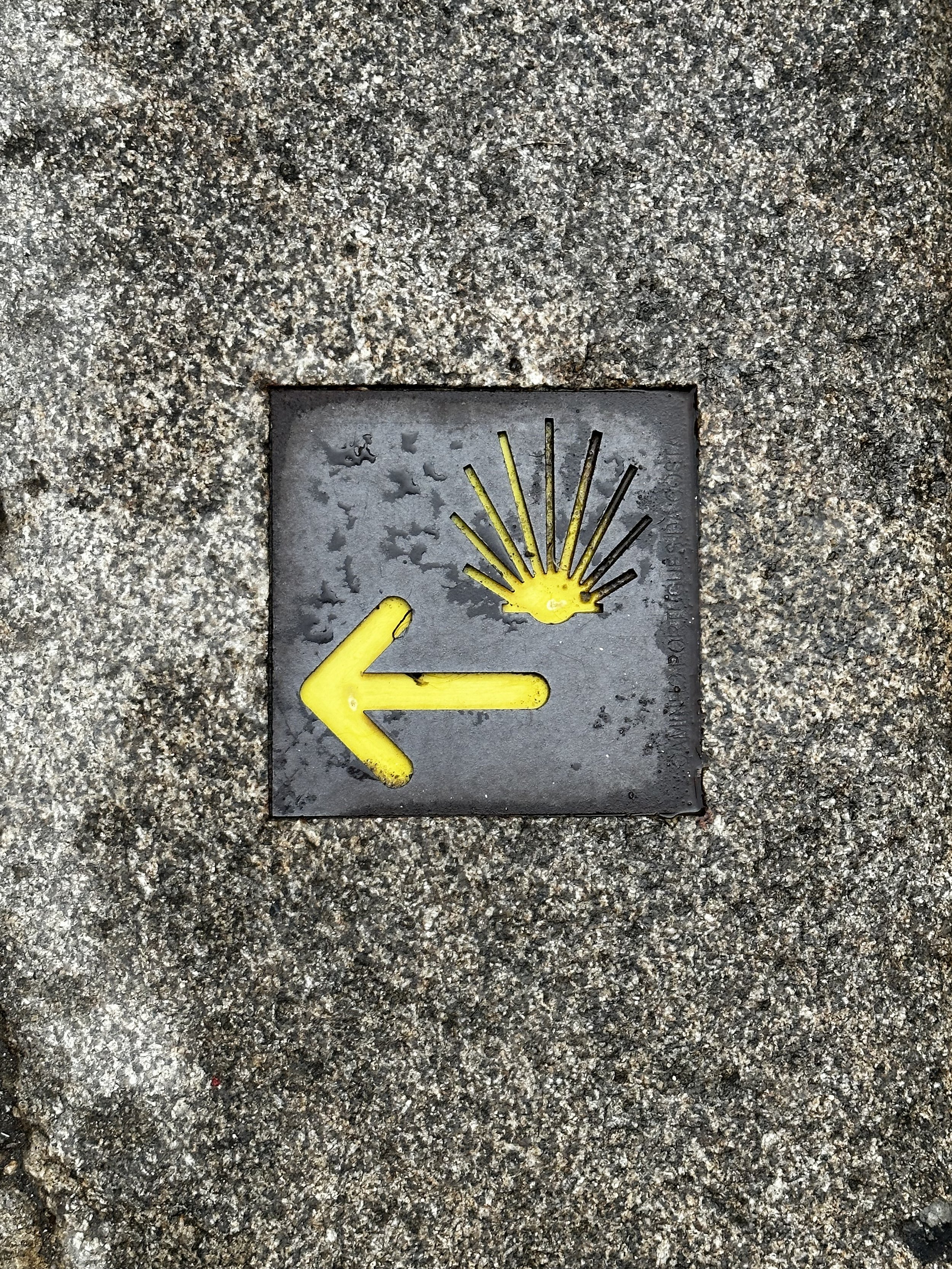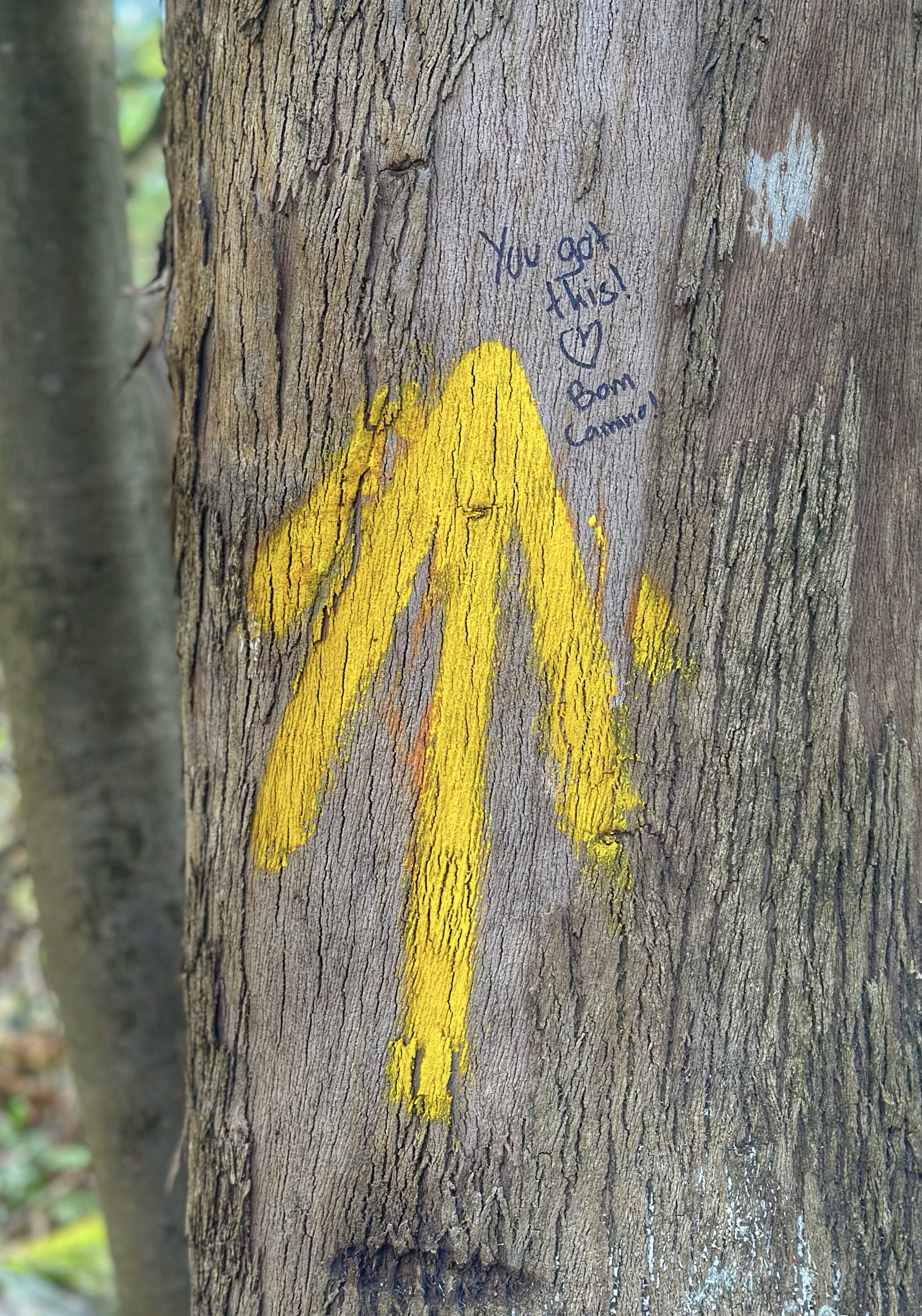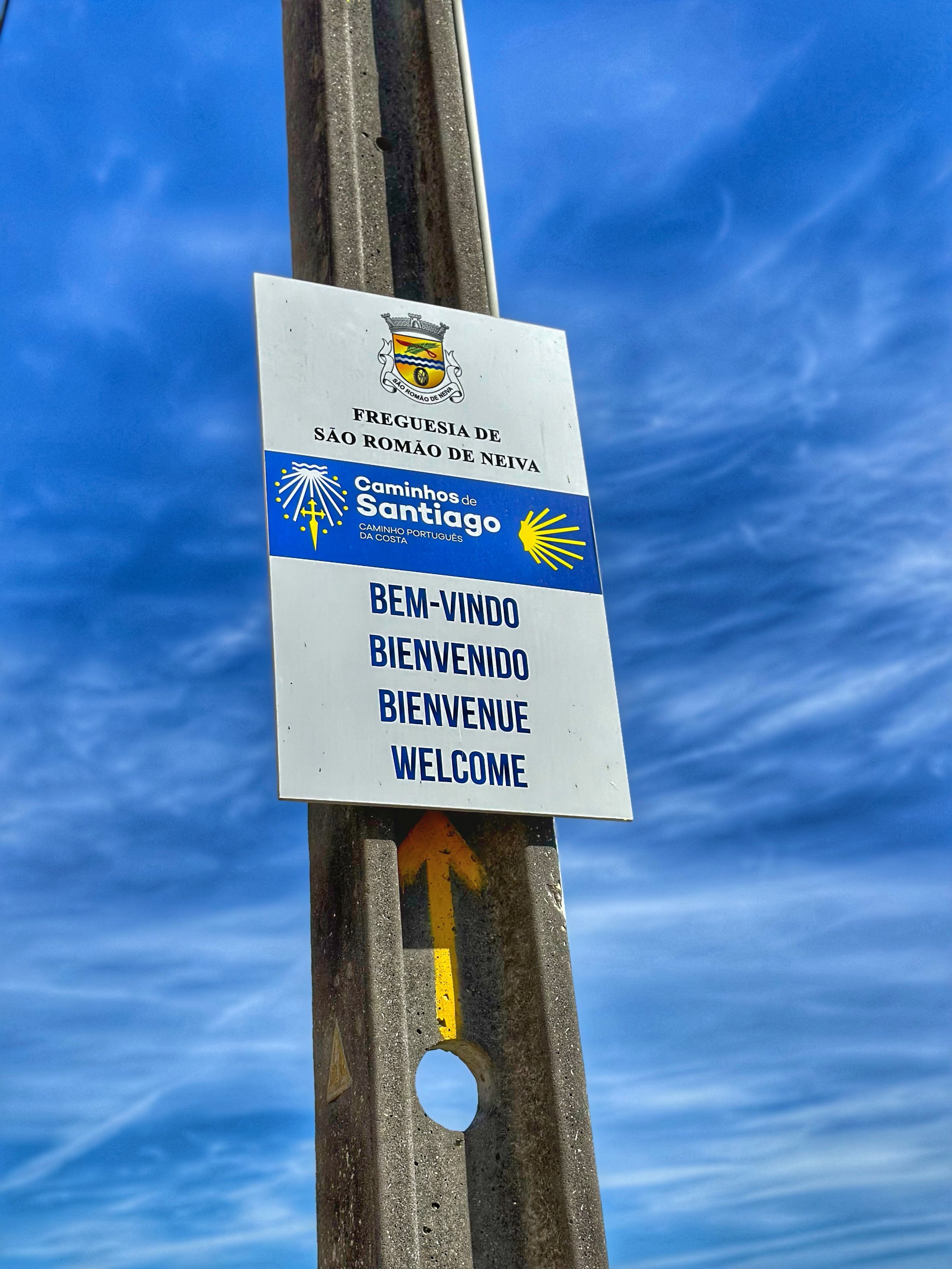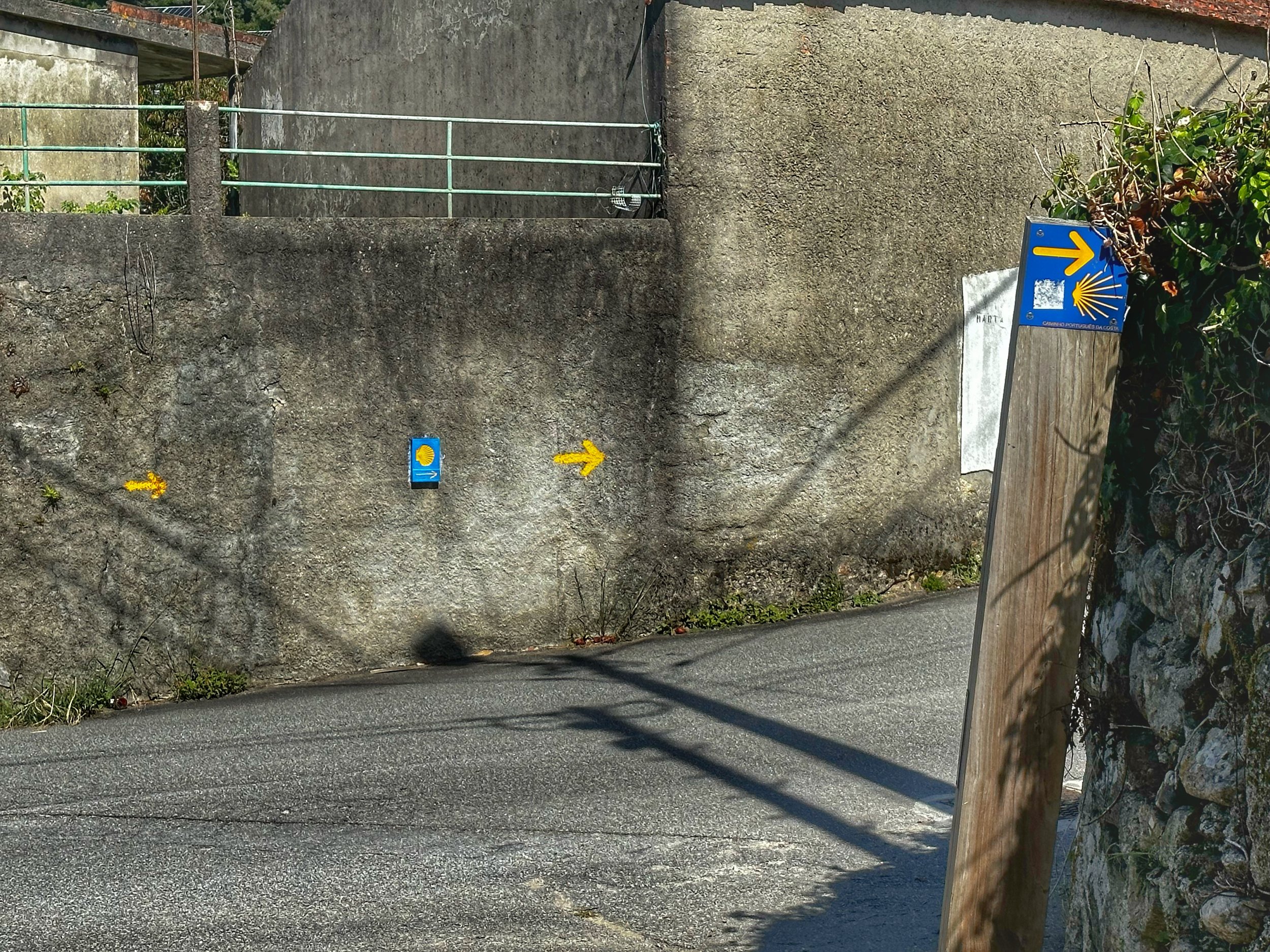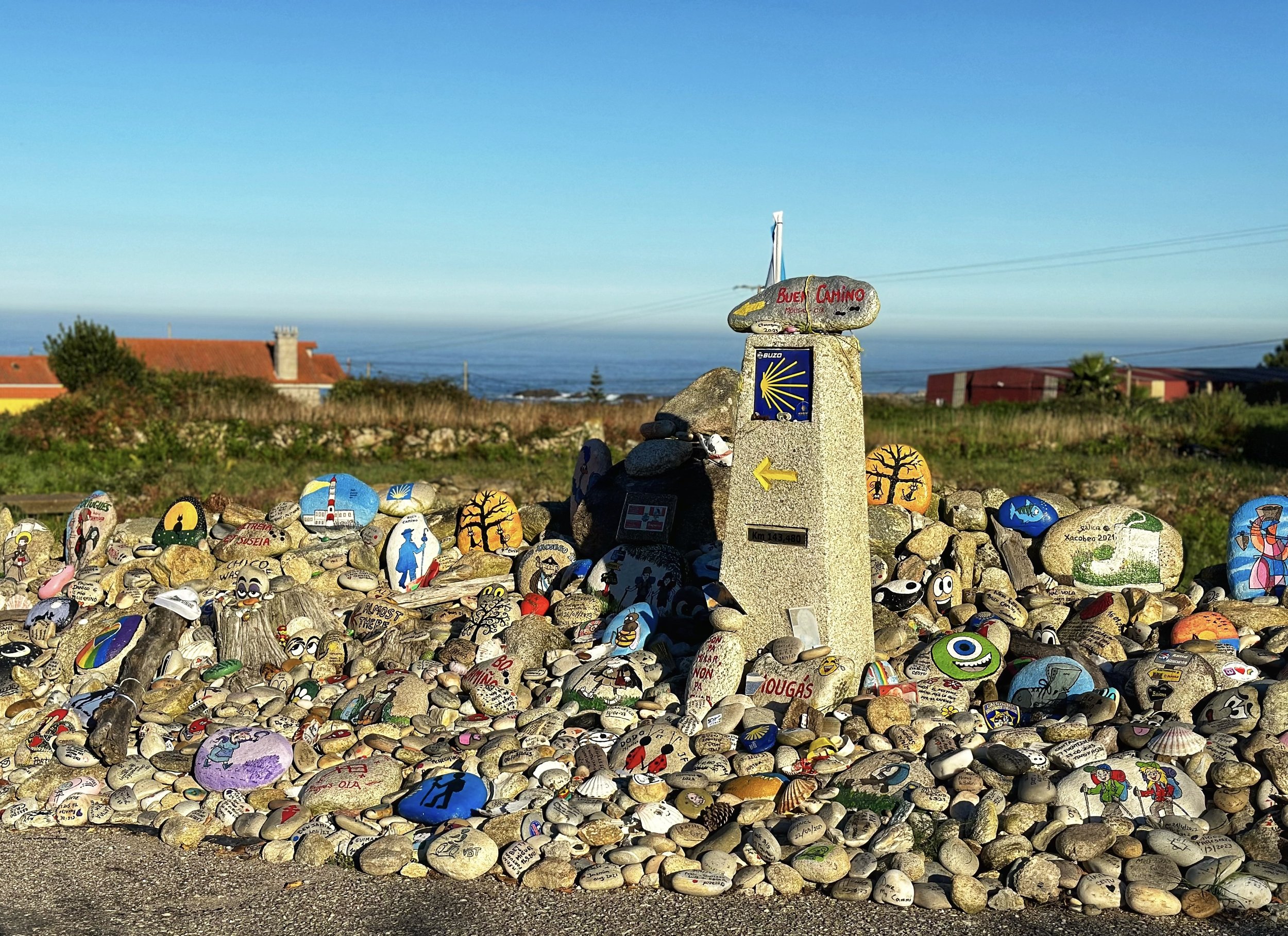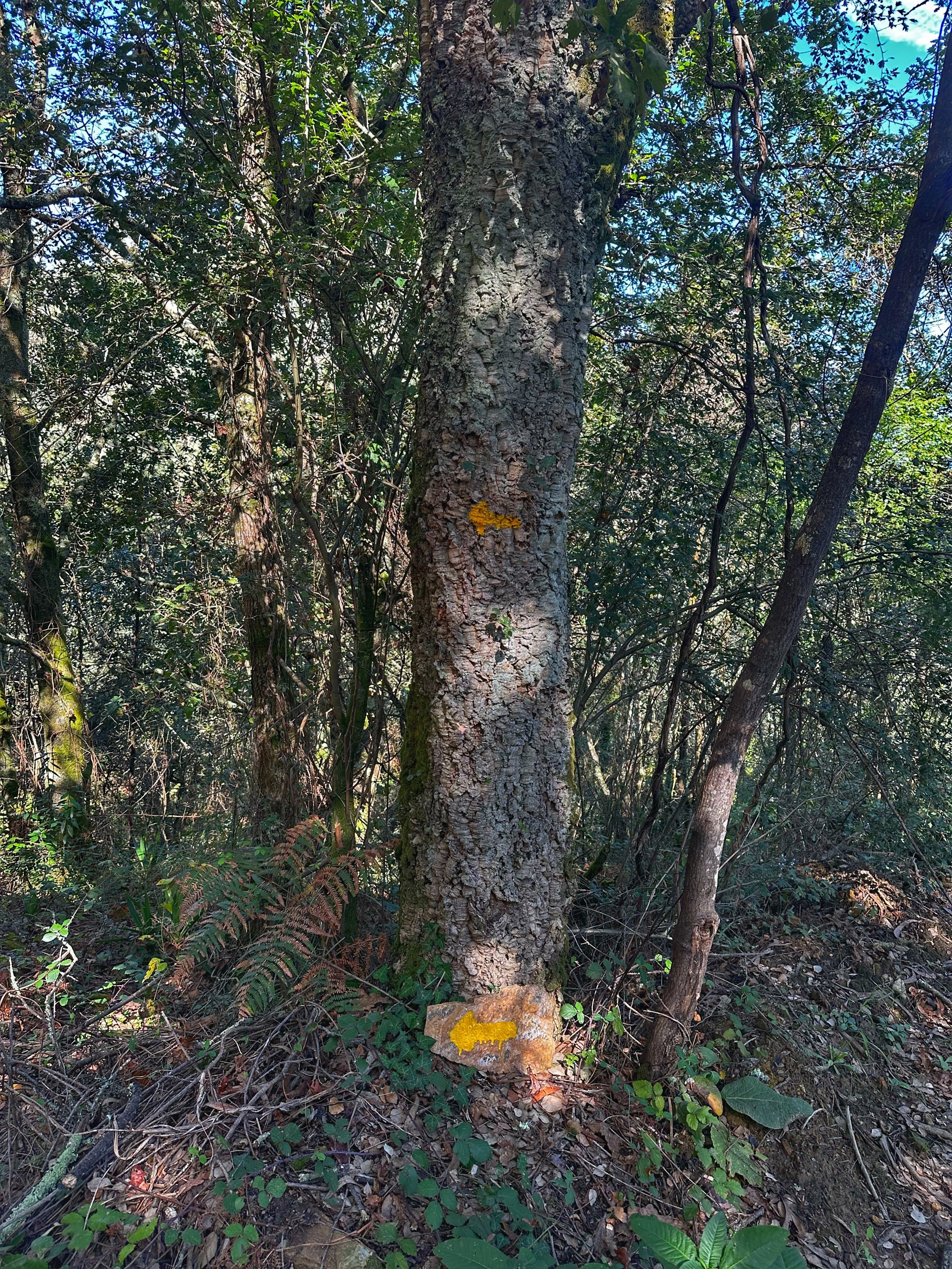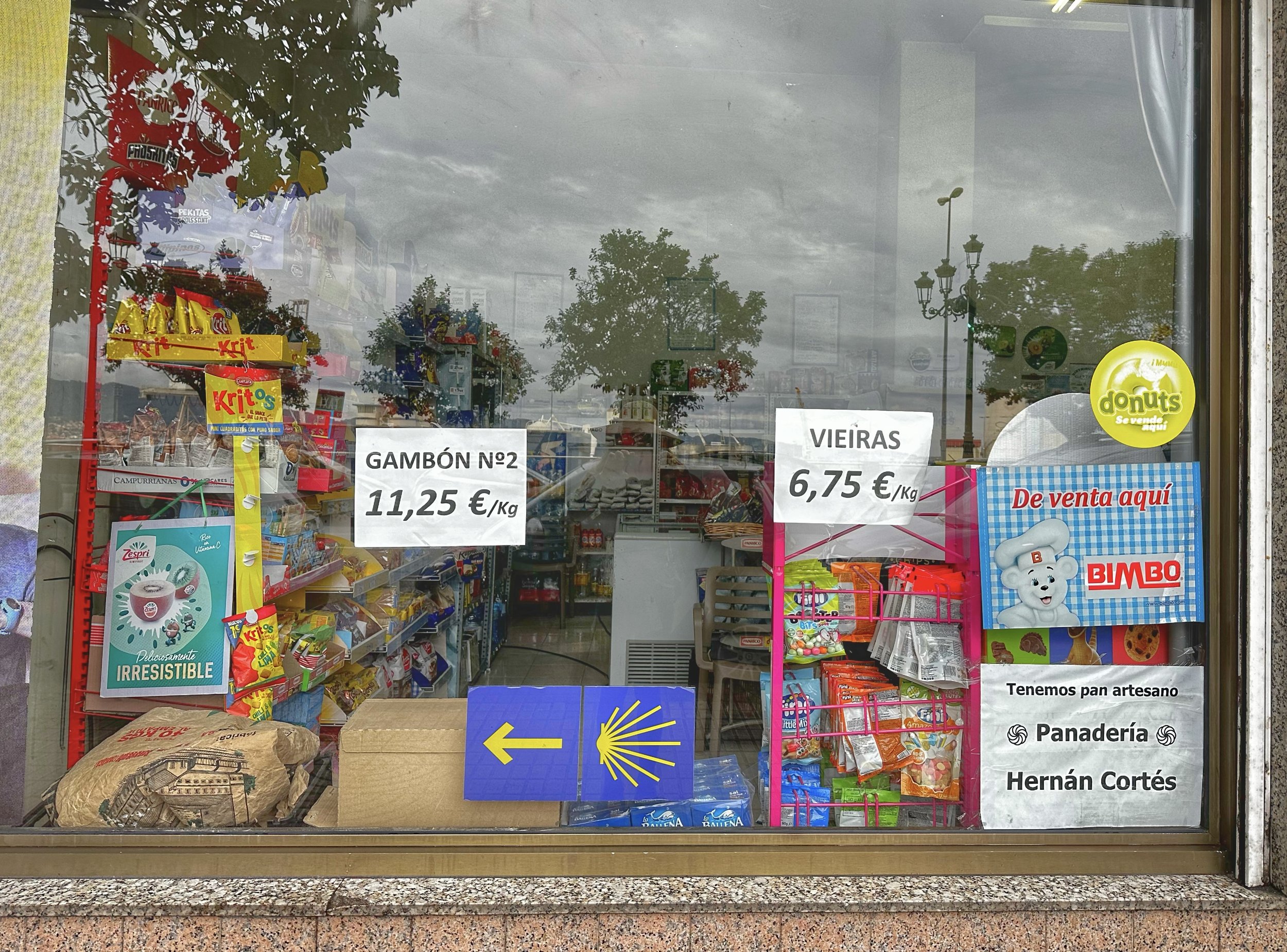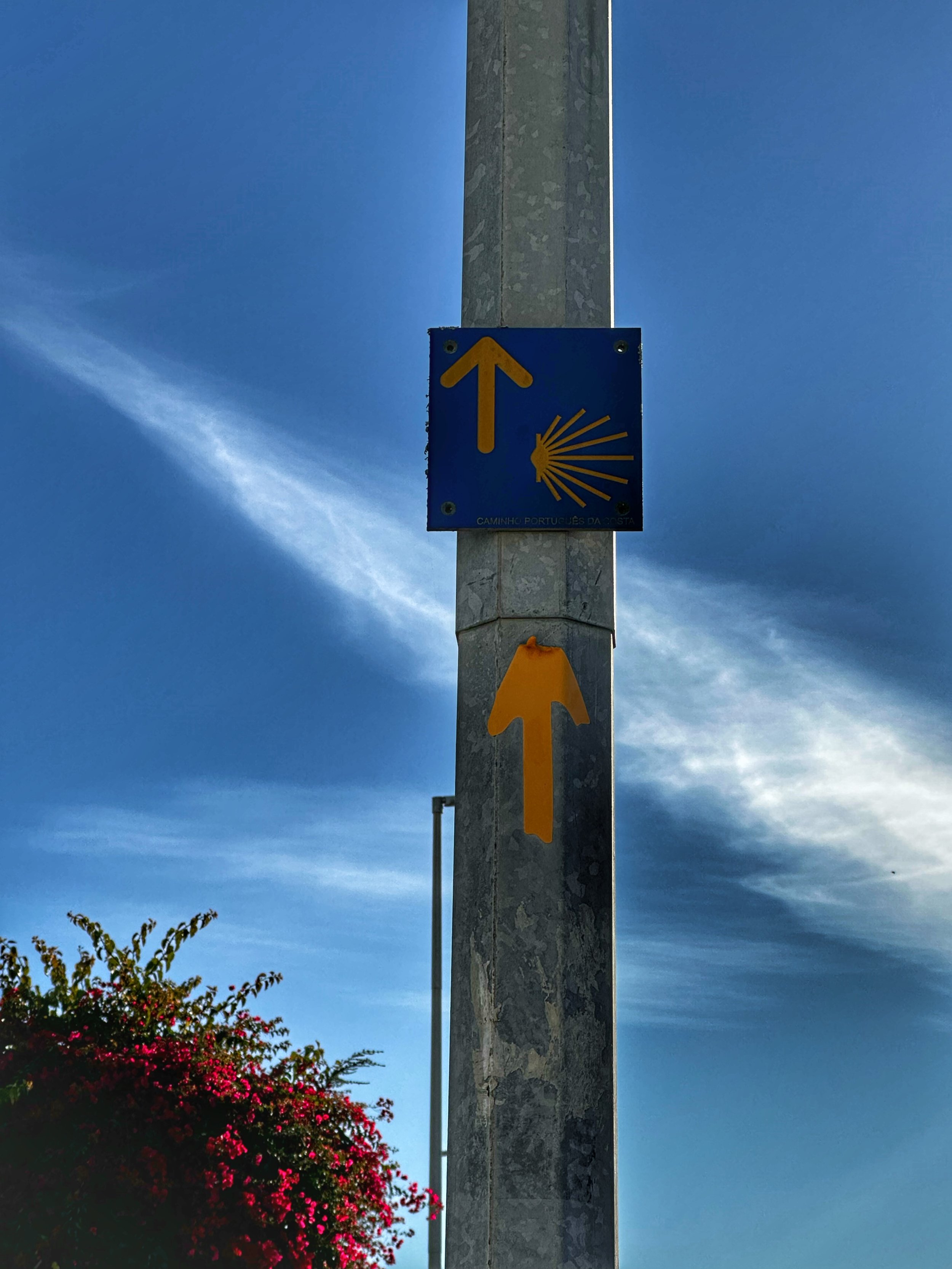Following Signs
“Dare to reach out your hand into the darkness, to pull another hand into the light.”
The trees are speaking to me; they send me messages. The lampposts are talking to me too; they invite me to obey them. Even the ground calls out to me occasionally, impressions on cobblestone or boulders, though sometimes it’s a wall or a garden gate, all of them urging: Look here! Do you see what I’m trying to tell you?
I’m not losing my mind. I’m following the way-markers on the Camino de Santiago.
The signs, for me, began at the Sé, or the Cathedral, in Porto, Portugal, with a worn tile embedded in an evermore worn road-stone underfoot, easy to miss if you aren’t accustomed to the symbology, which at the outset I wasn’t. It took a while to acclimate my eyes to the search for the typically conjoined set of yellow arrows and scallop shells, and now I see them everywhere. It reminds me of when we moved onto our farm property and I set out to eradicate the poison oak in the wooded swale by the stream. At first I would walk right through it, contaminating myself, unable to distinguish the poison oak’s shape and hue from the wild salal and Oregon grape, but then as I became attuned to it after months and months of stalking it I could spy it easily even if my mind was elsewhere, catching a glimpse as I plowed past in a tractor or in hot pursuit of a dog.
I’m not that good yet at spotting the Camino’s yellow arrows and shells, but I’m getting better day by day at keeping my eyes open for them now that I know what to look for.
The scallop shell has long been associated with the Camino and with St. James (the Camino de Santiago being The Way of St. James), by way of fables connecting the saint with the seashell. Rumor has it that the boat bearing his body posthumously to Spain may have been dashed on the rocks in a storm but his body was later discovered by his disciples intact and covered with scallops on the beach – or – his body was encased in a rocky tomb of shells when disinterred in a field in the 800s – or – a bride (or maybe a bridegroom) fell into the ocean near the boat carrying the Apostle’s body and the spirit of the saint levitated the bride/groom out of the sea, unharmed, on a scallop, like Venus – or – James placed a scallop on an injured knight’s neck, healing him and saving the man’s life, one of the 23 miracles that resulted in James’s sainthood. The one truism is that scallop shells abound on the Galician coastline and early pilgrims including, perhaps, St. James himself, carried the concave shells with them to ladle water from streams or to beg small portions of food as might fit in the scallop’s bowl – a scoop of oats or barley – from generous townsfolk along the pathway. Crusaders of the Order of St. James, who took it upon themselves to protect the pilgrims, eventually commandeered the scallop as their emblem and it has ever after been the symbol of the Camino. While pilgrims in the Middle Ages collected a scallop shell in Galicia to present back at home as certification that they completed the trek and as proof to authorities that they were exempt from tax payment during their absence, current-day pilgrims wear the shell – either as a necklace or in the form of pins or badges sewn to their backpacks – to indicate solidarity of purpose.
Thus the Camino always had a symbol, but for a very long time it lacked way-markers. In ancient years a simple footpath might have been easy enough to follow from one place to another, but the advent of contemporary road systems and urban sprawl swallowed the footpaths so that in more modern times even those who might have wanted to make the pilgrimage could no longer find their way. Enter Don Elías Valiña Sampedro, the parish priest in O Cebreiro, Spain, which sits smack-dab on the Camino Frances (originating in France), the most popular pilgrimage route to Santiago. Spurred by a personal fascination with the stories of the Camino, in 1984 he decided to singlehandedly rescue the abandoned pilgrimage tradition by marking the trail from the Pyrenees mountains to the Cathedral of Santiago. Following old maps, he drove cross-country in his Citroën GS stuffed full with gallons upon gallons of leftover (read: free) street paint pilfered off road crews along the way, clearing paths and, more importantly, painting what have become iconic yellow arrows at not just tricky turns but also all along the straightaways. Thanks to him, one can never go too far without being reassured by the presence of a yellow arrow that one is on the right path. (E.L. Doctrow famously said of driving at night in the fog, “you can only see as far as your headlights, but you can make the whole trip that way” and it is equally true for Father Valiña’s arrows: moving from brushstroke to brushstroke, one can travel hundreds of miles at ~30-meter intervals with no other guide.)
As is the case for any rogue trailblazer, the priest’s obsession landed him in no small degree of hot water with locals and officials alike given that (with no authorization aside from his own strong will) he splashed yellow arrows all over the sides of private homes, municipal buildings, state roadways, and nearly any upright object including trees and streetlamps from one end of the country to the other. Part of the mythos now surrounding him holds that when stopped by police who inquired as to what the hell he was up to, he responded that he was planning an invasion. Judging by the number of pilgrims following his arrows today – and complemented by the fact that government agencies have now taken up his mantle – his answer, and his preoccupation, certainly seem prescient.
As for me, I am grateful to him and the many volunteers since who have shouldered the burden of maintaining his markings. For if a pilgrimage is anything, it is an act of faith. For some, faith in God. For all, to one degree or another, faith in self. But also, the dark horse, the one I hadn’t much considered when hedging my bets (Do I have what it takes to walk this? Do I not?): faith in the kindness of strangers.
Let me be clear that while there are aspects of this adventure of mine that may look like a lark – perhaps there are aspects that are or will be a lark – it is no easy thing to abandon all that is familiar. To walk away, leaving everything you know behind. Every. Last. Blessed. Thing. That I did so is not an indication of lack of fear, but of a choice to do the thing that is frightening regardless. I appreciate security as much as the next person, and I am accustomed to having someone else to rely on at nearly every turn. There is a reason partnership is so popular, and it’s not just because we’re all hopeless romantics: two sets of eyes, two minds combined on a task, ensures less is missed; most goals are reached more quickly, more surely.
There is little that can make one feel more alone more swiftly than standing in a foreign wood by oneself, following a path that splits in the distance, not knowing which way to turn. But a week or so in, I am learning to lean in to faith. I keep walking, blindly, but with eyes and heart open, and when I get to that fork in even the most remote of areas it is reliably there, sometimes very faded, sometimes freshly strengthened: the yellow arrow in the knot of a tree, or on a rock fixed at the intersection of the Y in the trail. The yellow arrow someone painted some months or years before on their day off from work instead of reading a book or playing with their kids or going to the pub with friends; the arrow they walked miles to leave behind. And in that moment when I glimpse it I know someone has been here, thinking of me, preparing the way for me. Me in the abstract, of course, but me nonetheless. I feel the energy of that person rise up from the ground beneath me; I sense them having looked around, curious, wondering: Where might she get lost? Where might she falter, stumble, question if she has lost her way? And there they paint a mark that says: I am here to help you. I am here, where you are not yet but someday will be. When you get here, let this arrow guide you.
I have touched so many arrows. I reach up or bend down to press my hands to them and in so doing aim my gratitude backward into the past, to the day someone stood here with paintbrush in hand and touched this same tree, this rock. Thank you, I say. Thank you.
I have not been alone for even a single step along this Way.
